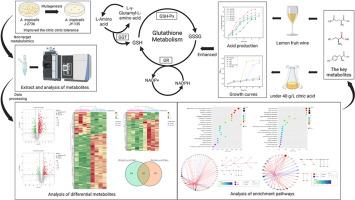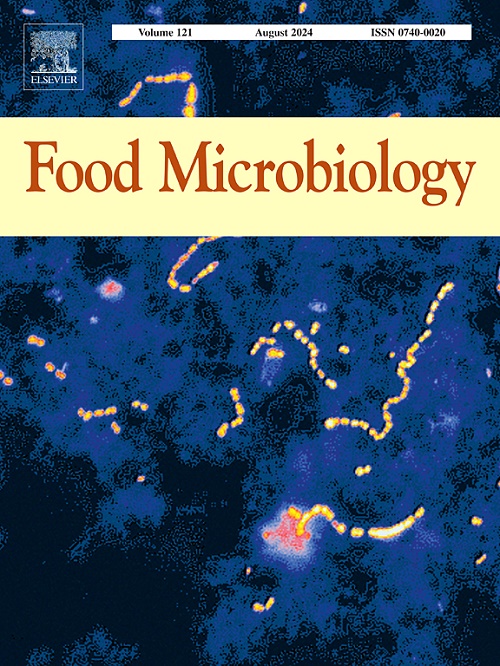Glutathione metabolism contributes to citric acid tolerance and antioxidant capacity in Acetobacter tropicalis
IF 4.5
1区 农林科学
Q1 BIOTECHNOLOGY & APPLIED MICROBIOLOGY
引用次数: 0
Abstract
Acetobacter is one of the main species producing fruit vinegar and its tolerance mechanism to citric acid has not been fully studied. This limits fruit vinegar production from high-citric-acid fruits, which are excellent materials for fruit vinegar production. This study analyzed the metabolic differences between two strains of A. tropicalis with different citric acid tolerances using non-targeted metabolomics. Differential metabolites and metabolic pathways analysis showed that the enhanced amino acid metabolism significantly improved the citric acid tolerance of A. tropicalis and the deamination of amino acids may also play a role. In addition, the up-regulated phosphatidylcholine (PC) and N-heptanoylhonoserine lactone indicated decreased membrane permeability and enhanced quorum sensing (QS), respectively. The analysis of the interaction between pathways and metabolites indicated that Gln, Cys, and Tyr contribute to improving citric acid tolerance, which was also confirmed by the exogenous addition. After adding the amino acids, the down-regulated qdh, up-regulated ggt, and improved glutathione reductase (GR) activity in J-2736 indicated that glutathione metabolism played an important role in resisting citric acid, and cellular antioxidant capacity was increased. This study provides a theoretical basis for efficient fruit vinegar production from citric-acid-type fruits.

谷胱甘肽代谢有助于热带醋酸杆菌的柠檬酸耐受性和抗氧化能力
醋酸菌是生产果醋的主要菌种之一,但它对柠檬酸的耐受机制尚未得到充分研究。这限制了高柠檬酸水果的果醋生产,而高柠檬酸水果是生产果醋的绝佳原料。本研究利用非靶向代谢组学分析了两株对柠檬酸耐受性不同的热带酵母菌的代谢差异。差异代谢物和代谢途径分析表明,氨基酸代谢的增强显著提高了热带酵母菌对柠檬酸的耐受性,氨基酸的脱氨基作用也可能起到一定作用。此外,磷脂酰胆碱(PC)和 N-庚酰基半丝氨酸内酯的上调分别表明膜渗透性降低和法定量感应(QS)增强。对途径和代谢物之间相互作用的分析表明,Gln、Cys 和 Tyr 有助于提高柠檬酸耐受性,外源添加也证实了这一点。添加氨基酸后,J-2736 中的 qdh 下调,ggt 上调,谷胱甘肽还原酶(GR)活性提高,表明谷胱甘肽代谢在抗柠檬酸中发挥了重要作用,细胞抗氧化能力提高。这项研究为利用柠檬酸型水果高效生产果醋提供了理论依据。
本文章由计算机程序翻译,如有差异,请以英文原文为准。
求助全文
约1分钟内获得全文
求助全文
来源期刊

Food microbiology
工程技术-生物工程与应用微生物
CiteScore
11.30
自引率
3.80%
发文量
179
审稿时长
44 days
期刊介绍:
Food Microbiology publishes original research articles, short communications, review papers, letters, news items and book reviews dealing with all aspects of the microbiology of foods. The editors aim to publish manuscripts of the highest quality which are both relevant and applicable to the broad field covered by the journal. Studies must be novel, have a clear connection to food microbiology, and be of general interest to the international community of food microbiologists. The editors make every effort to ensure rapid and fair reviews, resulting in timely publication of accepted manuscripts.
 求助内容:
求助内容: 应助结果提醒方式:
应助结果提醒方式:


